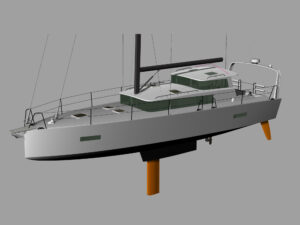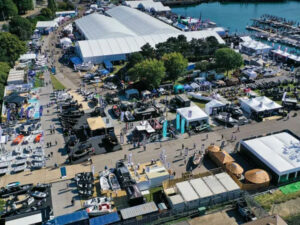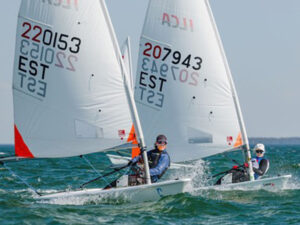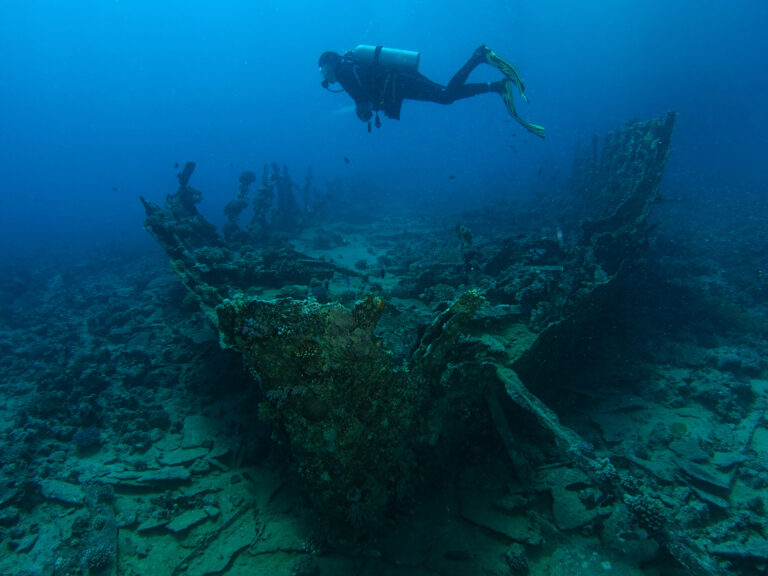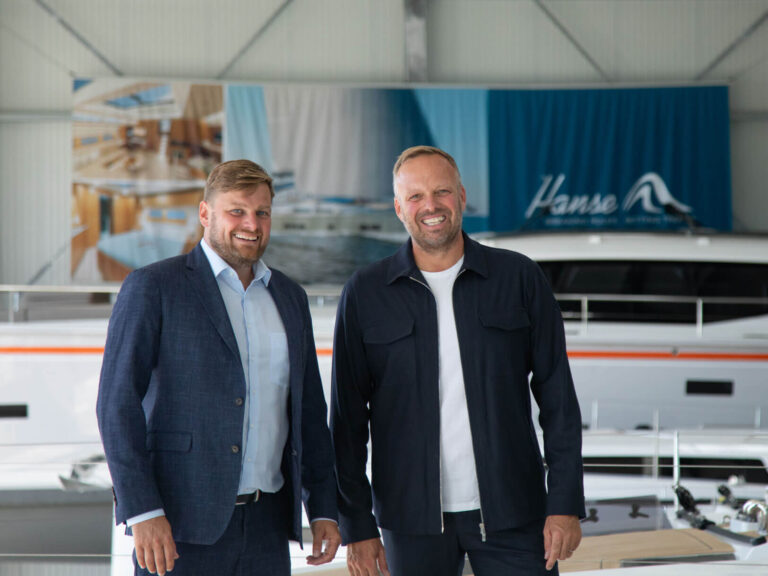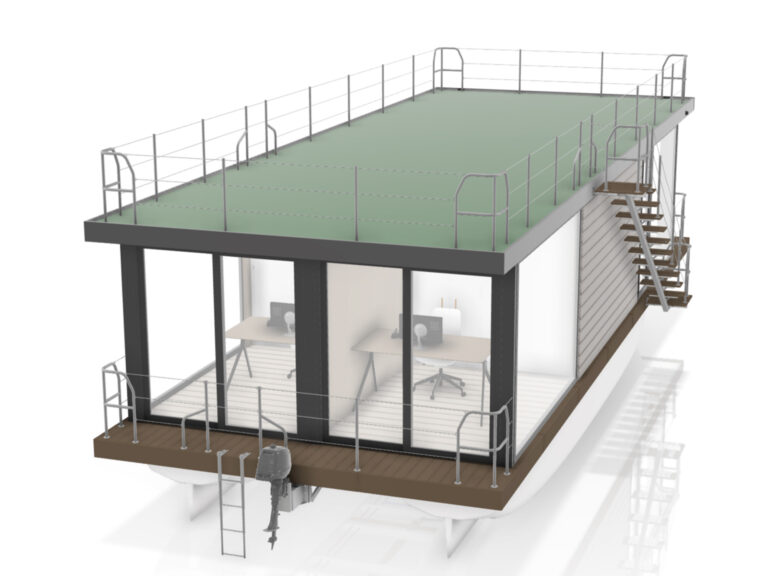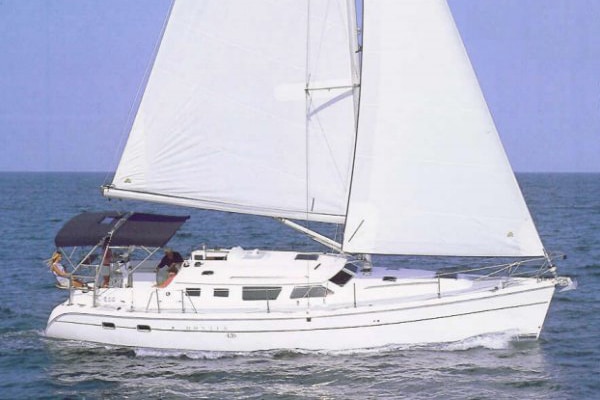
On a morning last February, when half of the country was getting hammered by another winter storm, I was coasting off Miami Beach aboard the new Hunter 426 Deck Saloon (DS) sloop. Sunburn was my biggest concern.
As if that weren’t enough reason to feel smug, the 426 DS was reaching at 5.3 knots in true wind speeds of 10 knots or less. On a day when most cruising sailors would be tempted—if not forced—to reach for the ignition key, we found ourselves contentedly making good time toward Fort Lauderdale.
At this rate, I figured we’d cover the 23 miles or so in plenty of time for lunch.
With a molded brow over her tinted windows, she looked the part of a purposeful vessel. Aimed at a broad range of sailors, the 426 DS—also available without the raised deck as the 426 Aft Cockpit—faithfully finds a sweet spot between price, performance, and comfort. Priced at just over $200,000, the 426 will no doubt hold great appeal for sailors who don’t want their weekend sails or summer getaways spoiled by lazy breezes. And for a dockside liveaboard who can’t bear to part with the comforts of land life, the boat is chockablock with familiar appliances, creature comforts that are above the standard that you’ll find on many boats in this price range. When it comes to meeting popular aspirations at a price we can live with, Hunter’s streamlined production process gives it a great advantage.
Small-output builders who produce a dozen or two boats a year focus on a niche, with reasonable assurance that if they deliver the right combination of features and quality, they’ll find the buyers they need. Being one of the “Big Three” sailboat builders in the North American market—Catalina and Beneteau are the other two—Hunter Marine is able to reach beyond the specific niches of cruising-boat buyers and appeal to a broader customer base.
In the last two model years, Hunter Marine has racheted up its boats’ value, and much of the effort has been made in the areas of accommodations and onboard amenities. On going below on the 426 DS, the results are readily apparent. Built with modular manufacturing techniques, the interior features a veneered- panel ceiling, a technique that ties the components together visually while giving the main cabin a subtle warmth.
Generously sized and well laid out in a practical L-shape, the galley is nicely fitted out with a two-burner stove and twin deep stainless-steel sinks set in Corian countertops. Its convenience is enhanced by the ventilation provided by two opening ports, a hatch, and the proximate companionway. The refrigerator and freezer are under-counter, custom stainless-steel units that offer the convenience of front-opening household appliances and leave the counters clear for food preparation. Surprisingly, Hunter’s tests found the front-opening units draw fewer amps than many standard top-opening boxes. In practical application over six days of testing, under full electrical load—including lights, autopilot, instruments, and refrigeration—the batteries needed recharging for about 90 minutes every 10 hours, using the optional high-output alternator.
The centerpiece of the main saloon is an eye-catching glossy varnished table with a center leaf that pulls out to convert to a coffee table. The setup allows easy entry and exit to the U-shaped dinette, and the table drops down to convert to a double berth.
A complement of four can sit around the dinette on sculpted seats and with ample elbow room, and the settees are long enough and straight enough to stretch out on. Here, as in other areas of the accommodations, the ambiance is helped by an abundance of wood, enhanced by well-matched veneered surfaces and solid trim. A flat-screen TV pivot-mounted on the starboard saloon bulkhead stands by to entertain dockside—this and its cable socket are standard equipment. The saloon’s large windows are all equipped with sliding shades and screens—musts for tropical sailing.
The forward cabin—with a V-berth—has its own head and ample storage. There’s also a Pullman option, which features a double berth along the port side, opening the starboard side for a spacious dresser with drawers and a vanity sink.
In the aft cabin, the queen-size berth (with innerspring mattress) is set athwartships, and by virtue of the cockpit’s height above the waterline, it’s neither claustrophobic nor restrictive and is extremely comfortable with the boat at rest. Other amenities in this roomy cabin are a short couch and a vanity table with a Corian dresser top fenced, rather incongruously, by a stainless-steel railing that serves as a strong point for lifting and moving the vanity to access the aft part of the engine.
Located in the passageway, and with entries from the main cabin and the aft stateroom, the aft head contains a separate stall shower. Adjacent to the small couch (a good nook for reading) is a storage locker that may also accommodate an optional washer and dryer unit.
Not only has Hunter’s execution of the furniture been raised a notch; it’s also clear that the company is paying close attention to the parts you don’t see at first glance. The electrical wiring is laid out cleanly, to a large extent in conduit and chases and, according to Skip Moyer of the Boat of the Year judging team, with careful regard to American Boat & Yacht Council recommendations.
The plumbing, too, is arranged logically, with through-hulls and manifolds readily accessible and clearly labeled, and the engine is revealed in its entirety when the companionway steps are swung aside and the vanity table aft is pulled up. Owners can expect to arrive for a weekend sail aboard the 426 and find all systems working and very little maintenance or cleaning to do. When maintenance is due, all systems are easy to reach to carrry out routine service.
On the Move
Like other Hunter models, both versions of the 426 have the Bergstrom & Ridder rig, a standard feature on Hunters, combined with a mainsail with in-mast furling. The B&R rig features spreaders swept back 30 degrees and no backstay, allowing plenty of room for a deep-roached, full-battened mainsail that would add even more oomph in light air. The Seldén in-mast furling system operated acceptably, so long as someone kept tension on the outhaul as the sail was being furled.
Because the spreaders are swept back as far as they are, Hunter protects the main by reinforcing patches where the sail rubs against the shrouds. However, during long downwind passages, Hunter reps recommend trimming the main to keep it off the spreaders. This means sheeting the main in harder than you might ordinarily on a boat without swept-back spreaders.
Mike Harker recently returned to the U.S. East Coast from Europe aboard his Hunter 466, Wanderlust, which also has a B&R rig. He said he usually puts one reef in his full-battened main when sailing downwind to reduce weather helm. For a headsail, he either uses the asymmetric spinnaker or poles out his genoa. He said the boat steers well by autopilot under either arrangement. In the light, south-Florida conditions, the boat logged its best velocity made good tacking downwind with the asymmetric; the full main, trimmed off the spreaders, didn’t induce excessive weather helm.
The Hunter 426 has all the control lines from the mast led to two winches on the cabin top, one on each side of the companionway. A couple of built-in tail bins at the companionway help to maintain order. Having halyards controlled by winches on the mast would reduce clutter, but leading all lines aft is consistent with the Hunter philosophy of keeping things simple.
The cockpit is roomy and wide, and the centerline table offers good support for those seated to windward. To keep the cockpit comfy for sitting, it’s bereft of cleats, and the jib-sheet winches are well aft, putting them within easy reach of the helmsman.
As is customary on Hunters, the traveler is overhead, on a stainless-steel arch, to keep the cockpit clear of the obstruction and the boom clear of your head. The helmsman can easily adjust the mainsheet traveler and the jib sheets, although the mainsheet itself is at the companionway. The setup works best when there’s a couple of people in the cockpit or with an autopilot doing the steering.
The Whitlock steering arrangement offered excellent control, and in the unlikely event of a failure here, the emergency tiller is right at hand in the port seat locker. The tiller shaft had slots that loosely mated with a pin through the head of the rudderstock, which is fiberglass. The emergency tiller is designed to be used with lines led to the jib-sheet winches, but under power in flat water, these lines weren’t necessary.
During the mild conditions I experienced on my offshore test aboard the 426 DS, I heard a persistent squeak caused by the exhaust hose, which was rubbing against the aft bulkhead where it was secured. More clamps to secure the hose should eliminate this problem and prevent an untimely rupture.
Two low hatches in the swim platform also drew my attention. The hatches, which are about 32 inches above the waterline when the boat is at rest, open to a large compartment that drains into the main bilge. Vulnerable in a following sea, the small hinges and fasteners used to attach the fiberglass hatch lids could be beefier. When closed, the hatches are watertight, according to Hunter.
For the kind of cruising that most people do, either version of the Hunter 426 would be a great platform for fun. Whether coastal cruising, island-hopping through the Bahamas, or skating across the bay for a weekend getaway, the Hunter 426 AC and 426 DS offer value that’s rare today in a comparable boat of this size with such standard amenities.
Darrell Nicholson is Cruising World’s senior editor.
Specifications:
LOA 42″ 1′ (12.83 m.)
LWL 39″ 2′ (11.94 m.)
Beam 14″ 6′ (4.39 m.)
Draft 5″ 0′ (1.52 m.)
Displacement 23,936 lb. (10,404 kg.)
Ballast 7,389 lb. (3,352 kg.)
Sail Area 872.3 sq. ft. (81.0 sq. m.) (100% FT, furling)
Mast Height 60″ 8′ (18.49 m.)
Water 125 gal. (473 l.)
Fuel 51 gal. (193 l.)
Auxiliary Yanmar 56-h.p. diesel
Designer Glenn Henderson and Hunter Design Group
Sailaway Price $215,000
Hunter Marine
(386) 462-3077
www.huntermarine.com


